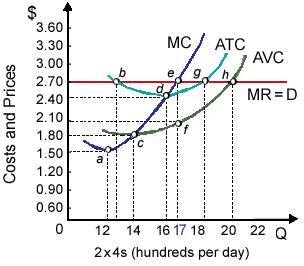Total variable costs of this profit-maximizing lumber mill are approximately: (i) $2000 per day. (ii) $2400 per day. (iii) $2800 per day. (iv) $3200 per day. (v) $3600 per day.

Hello guys I want your advice. Please recommend some views for above Economics problems.